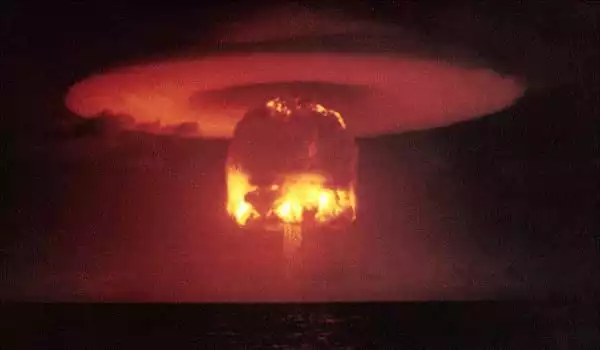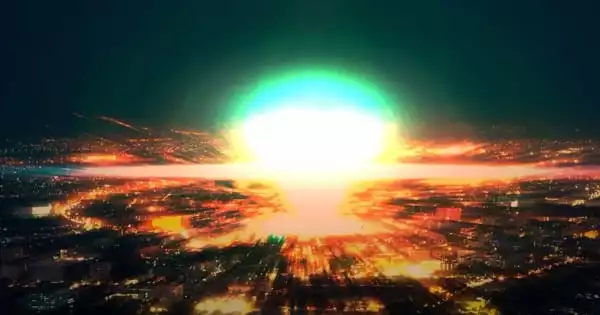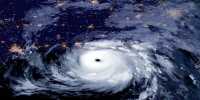According to new research, the massive columns of smoke produced by a nuclear war would alter the world’s climate for years and devastate the ozone layer, endangering both human health and food supplies. The international study uses newly developed computer climate modeling techniques to paint a grimmer picture of the aftermath of a global nuclear war than previous analyses.
The international study paints an even more bleak picture of the aftermath of a global nuclear war than previous analyses. The researchers used newly developed computer climate modeling techniques to learn more about the effects of a hypothetical nuclear exchange, such as complex chemical interactions in the stratosphere that influence the amount of ultraviolet (UV) radiation reaching the planet’s surface.
“In addition to all of the immediate fatalities, the climate effects and UV effects would be widespread,” said lead author Charles Bardeen, a scientist at the National Center for Atmospheric Research (NCAR). “These aren’t close to where the war is taking place. Because they are global, they will have an impact on everyone.”
Bardeen and his colleagues discovered that smoke from a global nuclear war would destroy much of the ozone layer over a 15-year period, with ozone loss peaking at an average of about 75% globally. Even a regional nuclear war would result in a global peak ozone loss of 25%, with recovery taking about 12 years.
The massive columns of smoke generated by a nuclear war would alter the world’s climate for years and devastate the ozone layer, endangering both human health and food supplies, new research shows.
Because the ozone layer shields the Earth’s surface from harmful UV radiation, such effects would be disastrous for humans and the environment. UV radiation has been linked to certain types of skin cancer, cataracts, and immune system disorders. The ozone layer also protects terrestrial, aquatic, and agricultural ecosystems.
“Although we suspected that ozone would be destroyed after a nuclear war, resulting in increased ultraviolet light at the Earth’s surface, if there was too much smoke, it would block out the ultraviolet light,” said study co-author Alan Robock, a Rutgers University professor of climate science. “For the first time, we calculated how this would work and quantified how it would vary with the amount of smoke.”
The Open Philanthropy Project funded the study, which also received computational support from the National Science Foundation, NCAR’s sponsor, as well as the Universities of Colorado Boulder and Colorado State University. It was published in the American Geophysical Union’s Journal of Geophysical Research-Atmospheres.

Shifting atmospheric response to global war
Scientists discovered in the 1980s that the massive amounts of smoke produced by a nuclear war would cool the planet by blocking incoming sunlight, resulting in a “nuclear winter.” They also discovered that a nuclear war would destroy ozone due to chemical reactions involving nitrogen oxides produced by a nuclear weapon explosion’s fireball.
However, subsequent research indicated that the smoke would also cause ozone loss by heating the stratosphere, which alters chemical reaction rates, and by reducing photochemistry (chemical reactions caused by sunlight).
The authors of the new study investigated how much the reduced photochemistry would affect ozone destruction, as well as how much the smoke would protect the surface from UV radiation. They calculated the combined effects of nitrogen oxides, stratospheric heating, and reduced photochemistry on stratospheric ozone chemistry and surface UV caused by a global nuclear war for the first time.
The researchers combined four advanced NCAR-based computer models: the Community Earth System Model, which simulates global climate; the Whole Atmosphere Community Climate Model, which simulates higher regions of the atmosphere; the Tropospheric Ultraviolet and Visible Radiation Model, which calculates the amount of UV radiation that reaches the surface; and the Community Aerosol and Radiation Model for Atmospheres, which provides information on aerosols and radiation.
They investigated two scenarios using this modeling approach. A regional nuclear war between India and Pakistan generates 5 megatons of smoke in one. In the other, a global nuclear war between the US and Russia generates 150 megatons of smoke.
The findings emphasized the significance of employing sophisticated modeling techniques to flesh out the complexities of the atmosphere. For example, in the case of a global nuclear war, simulations showed that massive injections of smoke into the stratosphere would initially cool surface temperatures by blocking sunlight, altering precipitation patterns, shielding the planet from incoming UV radiation, and destroying the protective ozone layer. However, the smoke would begin to dissipate after a few years, and far more UV radiation would reach the surface due to the weakened ozone layer.
“Conditions would change dramatically, and adaptations that may work initially will not help as temperatures rise and UV radiation increases,” Bardeen explained. “You’d get this blast of UV just as the smoke was clearing up, with completely different effects on human health and agriculture.”
A regional nuclear war, on the other hand, would produce a more straightforward pattern, with UV increasing immediately while surface temperatures decrease and the ozone layer gradually recovering as the smoke dissipates.















